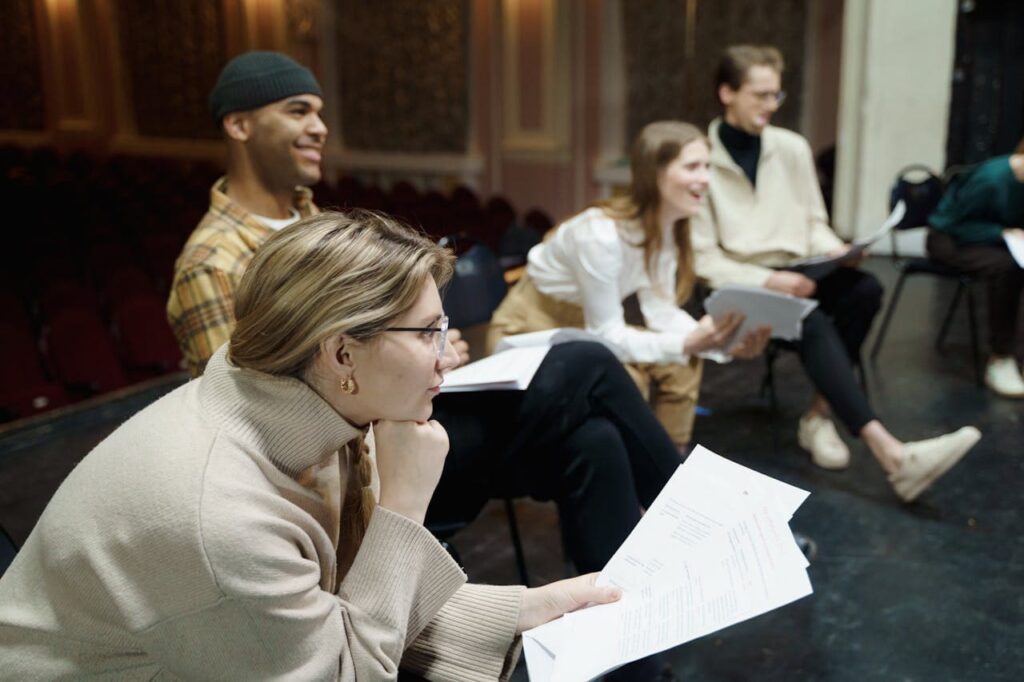Unlocking the Craft: Exploring the Depths of Acting Skills
Acting, often perceived as the art of portraying characters, is a multifaceted craft that goes beyond mere imitation. At its core, acting is about embodying the essence of a character, breathing life into their words and actions, and evoking emotions that resonate with audiences. Behind the glamorous facade of red carpets and spotlights lies a world of dedication, discipline, and mastery of a diverse set of skills. In this exploration, we delve into the intricate layers of acting skills, uncovering the nuances that define exceptional performances on stage and screen.
Understanding Emotional Depth: The Core of Acting
At the heart of every compelling performance lies emotional authenticity. Actors must possess the ability to tap into a wide range of emotions, from joy and love to sorrow and rage, and express them convincingly. Emotional intelligence, empathy, and vulnerability are indispensable tools in an actor’s arsenal, allowing them to connect with their characters on a profound level.
Mastering the Art of Physicality: The Language of the Body
Beyond verbal communication, acting encompasses the language of the body. Physicality plays a crucial role in conveying character traits, intentions, and emotions. From subtle gestures to dynamic movements, every action serves as a window into the character’s inner world. Mastery of body language enables actors to inhabit roles with authenticity and depth, captivating audiences with their expressive presence.
The Power of Voice: Harnessing the Instrument of Expression
The voice is a versatile instrument that can evoke a myriad of emotions and convey a character’s personality. Actors must hone their vocal skills, mastering tone, pitch, rhythm, and articulation to breathe life into their dialogue. From commanding monologues to whispered confessions, the nuances of vocal performance add layers of depth and richness to a character’s portrayal, drawing audiences into their world.
Embracing Adaptability: Navigating Diverse Roles
Versatility is a hallmark of great actors, as they seamlessly transition between roles of varying genres, time periods, and cultural backgrounds. Adaptability requires a willingness to step outside one’s comfort zone, embrace new challenges, and inhabit characters with authenticity and respect. Whether portraying historical figures, fictional personas, or complex antiheroes, actors must immerse themselves fully in the world of the character, transcending their own identity to embody the essence of another.
The Art of Improvisation: Spontaneity and Creativity
In the unpredictable realm of live performance, improvisation is a valuable skill that allows actors to think on their feet and respond to unexpected situations with spontaneity and creativity. Through improvisational exercises and techniques, actors learn to trust their instincts, collaborate with fellow performers, and explore new pathways of expression. The ability to improvise not only enhances the spontaneity of a performance but also fosters a sense of playfulness and discovery on stage.

Crafting Compelling Characters: The Intersection of Psychology and Imagination
Character development is a meticulous process that requires actors to delve deep into the psyche of their roles, uncovering their motivations, fears, and desires. Drawing from techniques such as method acting, character analysis, and emotional memory, actors breathe life into their characters, infusing them with complexity and depth. By immersing themselves in the inner world of the character, actors forge a connection that transcends the boundaries of fiction, inviting audiences to share in their journey of discovery.
The Importance of Collaboration: Harmonizing Ensemble Dynamics
Acting is not a solitary pursuit but a collaborative endeavor that thrives on the synergy between performers, directors, writers, and designers. Ensemble dynamics play a pivotal role in shaping the creative process, fostering an environment of trust, communication, and mutual respect. Through rehearsals, workshops, and improvisational exercises, actors cultivate a sense of ensemble unity, allowing them to elevate each other’s performances and create unforgettable moments of shared storytelling.
Conclusion
Acting is a transformative journey that demands dedication, discipline, and a lifelong commitment to growth and exploration. From the depths of emotional vulnerability to the heights of creative expression, actors navigate a rich tapestry of skills and techniques, weaving together the fabric of unforgettable performances. As we continue to unravel the mysteries of human nature and the human experience, the art of acting serves as a mirror that reflects our shared humanity, illuminating the beauty and complexity of the human spirit.
